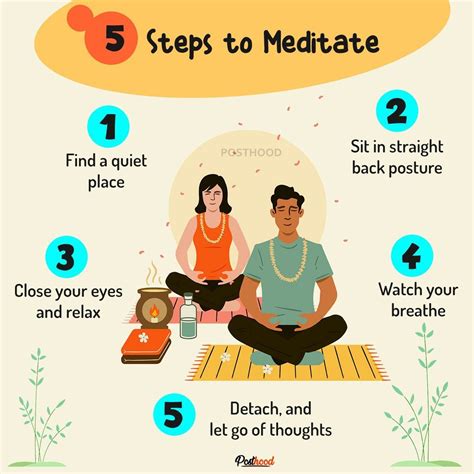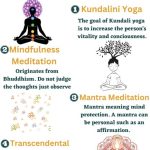Master Yoga Meditation: A Step-by-Step Journey for Mindfulness and Well-being
Yoga meditation is a powerful practice that has transformed lives for millennia. It involves more than just physical postures—it is a holistic system that integrates mind, body, and spirit. Whether you’re a beginner seeking to enhance mindfulness or an expert exploring deeper states of consciousness, this guide offers a detailed roadmap. From basic techniques to advanced applications, we’ll take you through every step, providing practical insights, historical context, and solutions to common challenges along the way.
Introduction
Yoga meditation is often misunderstood as simply stretching exercises or a means to relax. However, it is a profound practice that unites mental clarity with physical alignment and emotional stability. In today’s fast-paced world, more individuals are turning to yoga meditation for stress relief, better mental health, and spiritual growth. This comprehensive guide explores the key concepts, techniques, historical foundations, and benefits of yoga meditation. It’s designed to be accessible for everyone, from beginners to seasoned practitioners, and offers practical steps for integrating meditation into daily life.
Key Concepts
Before diving into the practical aspects, it’s essential to understand the core principles behind yoga meditation:
- Pranayama: Breath control and regulation, which is vital to centering the mind.
- Dhyana: Meditation in its most focused form, aiming for deep mental stillness.
- Asana: Physical postures that aid in preparing the body for prolonged meditation.
- Pratyahara: Withdrawal of the senses to achieve deeper mental concentration.
- Mantra: Repetitive sound or words used to focus the mind.
These concepts work synergistically to help practitioners attain mindfulness, balance, and insight. A key part of the process is understanding that yoga meditation is a lifelong journey, not a quick fix.
Historical Context
The roots of yoga meditation can be traced back over 5,000 years to the ancient civilizations of the Indus Valley. Initially mentioned in sacred texts like the Rig Veda and Upanishads, yoga developed over time into various schools of thought, each offering a unique perspective on how to unite body, mind, and spirit.
One pivotal moment in the evolution of yoga was the development of Raja Yoga by the sage Patanjali, who laid out the Yoga Sutras—a framework for achieving spiritual enlightenment through disciplined practice. Over centuries, yoga spread from India to the West, where it adapted to modern lifestyles but still retained its core emphasis on meditation.
Current State Analysis
Today, yoga meditation is practiced by millions worldwide, from casual gym-goers seeking flexibility to spiritual seekers looking for inner peace. The modern understanding of yoga emphasizes its health benefits, such as stress reduction, increased focus, and improved physical fitness. However, there’s growing debate over the commercialization of yoga, especially in the West, where the practice is sometimes stripped of its spiritual essence.
Challenges:
- Superficial practice: Focusing only on physical poses without exploring meditation or breathwork.
- Misconceptions: Believing that yoga is solely for flexibility or relaxation.
- Accessibility: Many beginners feel intimidated by advanced postures or complex terminology.
Despite these challenges, yoga meditation continues to evolve as a flexible practice adaptable to a wide range of needs.
Practical Applications
Here’s how you can integrate yoga meditation into your daily routine, whether you’re a beginner or more advanced:
Step-by-Step Meditation Process
- Select a Quiet Space: Choose a calm, distraction-free area for your practice.
- Begin with Breathing: Start with Pranayama (breathing exercises) to focus your mind. Inhale deeply through the nose, hold for a few seconds, then exhale slowly.
- Adopt a Comfortable Posture: Sit in a position that allows you to relax your muscles yet stay alert. The lotus pose is common, but even a simple cross-legged position can work.
- Introduce a Mantra: Chanting a mantra like “Om” helps stabilize the mind. Repeat this silently or aloud.
- Observe Thoughts: Instead of pushing thoughts away, observe them without judgment. This practice of mindfulness helps you maintain awareness.
- Gradually Increase Time: Start with 5-10 minutes daily, and gradually extend the meditation duration as you become more comfortable.
Case Studies
The benefits of yoga meditation have been observed in various real-life scenarios:
| Case Study | Outcome | Methodology |
|---|---|---|
| Corporate Wellness Programs | Increased employee productivity and reduced stress levels | Daily group meditation sessions |
| Military Veterans with PTSD | Improved emotional regulation and reduced symptoms of trauma | Incorporation of yoga meditation alongside therapy |
| Students with Anxiety | Enhanced concentration and reduced anxiety levels | Weekly mindfulness meditation sessions |
Stakeholder Analysis
Yoga meditation has different implications depending on the stakeholder involved:
- Practitioners: Those practicing yoga meditation report benefits such as increased self-awareness and reduced stress.
- Healthcare Providers: Yoga meditation is often recommended by therapists and doctors for mental health issues like anxiety and depression.
- Corporations: Many companies are investing in yoga-based wellness programs to improve employee productivity and reduce burnout.
- Yoga Teachers: Certified instructors help bridge the gap between ancient practices and modern needs, making yoga accessible to diverse populations.
Implementation Guidelines
For those looking to introduce yoga meditation into their routine or organization, here are some key guidelines:
- Start Small: Encourage short, daily practices rather than aiming for long sessions immediately.
- Focus on Breath: Breathing exercises are the foundation of meditation. Without a steady breath, meditation becomes difficult.
- Combine Practices: Yoga meditation can be enhanced by combining asana (postures) and pranayama (breathwork).
- Create a Supportive Environment: Whether at home or work, having a peaceful, dedicated space for practice is crucial.
- Offer Guidance: Beginners benefit greatly from trained instructors or online tutorials to guide them through the process.
Ethical Considerations
While yoga meditation provides many personal benefits, ethical considerations should not be overlooked:
- Cultural Appropriation: It’s important to practice yoga in a way that respects its origins in Indian culture.
- Commercialization: Yoga’s commercialization, especially in the West, raises concerns about the dilution of its spiritual essence.
- Inclusivity: Yoga should be accessible to everyone, regardless of physical ability, financial means, or background.
Limitations and Future Research
Despite its numerous benefits, yoga meditation isn’t a one-size-fits-all solution. It may not be suitable for those with certain mental health conditions like severe depression without professional guidance. Future research is needed to better understand how yoga meditation can complement conventional treatments for various psychological and physical conditions. Additionally, as technology evolves, the role of virtual reality and AI-guided meditation could transform how we approach this ancient practice.
Expert Commentary
In summary, yoga meditation offers a holistic approach to well-being that integrates body, mind, and spirit. From its historical roots in ancient India to its modern applications in wellness programs and mental health treatments, yoga meditation has proven to be both adaptable and transformative. It allows individuals to cultivate mindfulness, emotional regulation, and spiritual insight while offering a refuge from the fast-paced demands of modern life. Whether you’re just starting or looking to deepen your practice, yoga meditation is an invaluable tool for achieving inner balance and peace.








